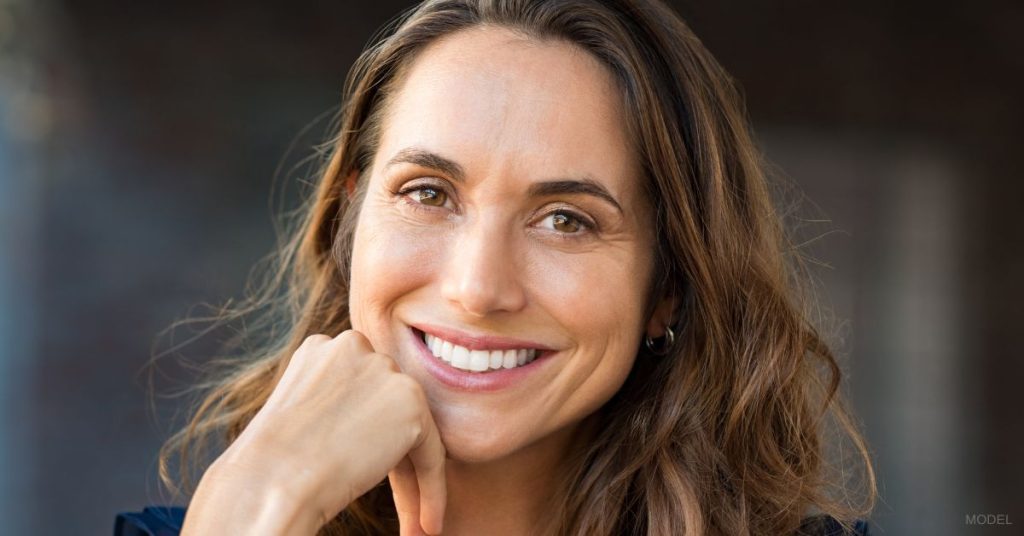If you’re wondering, “when is the best age for facelift surgery,” the truth is there’s no clear-cut answer. We believe that getting a facelift is a journey that men and women can embark on to look and feel better about themselves at any stage.
But keep in mind that age is only one factor we consider when tailoring our facelift surgery approach. We also assess your skin condition, facial anatomy, and overall goals. That said, unique considerations come into play based on a patient’s age. Let’s explore how we customize your facelift journey during different life stages.
Preventing Aging in Your 30s and 40s
It used to be that facelifts were considered a procedure for patients in their 60s. But today’s patients are more proactive about addressing the early signs of aging. While everyone ages differently, your face may begin to show early signs of aging in your 30s—mainly because your skin’s collagen and elastin production start decreasing by about 1% each year. At this stage, you may not be quite ready for invasive facelift surgery, but nonsurgical options such as BOTOX® Cosmetic can effectively address early symptoms and help slow the aging process.
By your 40s, you may begin to notice more moderate symptoms of aging. These may include:
- Fine lines and wrinkles
- Mild facial sagging
- Decreased skin elasticity
One or more of these concerns may make a patient in their 40s an ideal candidate for a mini facelift. This less invasive procedure uses smaller incisions than a traditional facelift and addresses mildly sagging skin and early jowls. We tighten internal ligaments to help minimize future aging. While a mini facelift won’t provide the dramatic results a full facelift can deliver, it’s often an excellent approach for younger patients who want subtle facial rejuvenation with minimal downtime.
A Facelift in Your 50s
During your 50s, the signs of aging become much more visible, and traditional facelifts are commonly performed. Patients at this stage are usually concerned by the following symptoms:
- Deeper creases and wrinkles on the face and neck
- Heavier sagging and jowls
- Loss of facial volume, especially in the cheeks
A facelift performed by a knowledgeable board-certified plastic surgeon can help you take 10 to 15 years off your appearance.
During this transformative 3- to 6-hour procedure, we make longer incisions by your hairline and ears to remove loose skin and tighten facial muscles and tissues to rejuvenate your appearance. We fully customize your facelift procedure to address the mid-face, lower face, neck, or a combination. While a full facelift requires a longer recovery time, the results are dramatic and long-lasting.
92% of RealSelf patients say getting a facelift is worth it.
Getting a Facelift in Your 60s
Patients in their 60s usually require more comprehensive rejuvenation than those in their 40s or 50s. In your 60s, it’s common to address multiple concerns by combining facelift surgery with other surgical and nonsurgical cosmetic procedures for optimal results. These may include:
- Eyelid surgery (blepharoplasty) to “awaken” sagging or puffy eyelids
- Injectables such as BOTOX and dermal fillers to smooth wrinkles and creases and add youthful volume to the face
- Liquid facelift that combines BOTOX and dermal fillers to refresh your overall appearance without incisions or lengthy downtime
Remember that while a facelift takes years off your appearance, it doesn’t stop the aging process. Older patients may need more periodic touch-ups to maintain their desired results.
Your 70s and Beyond
Patients in their 70s and older who are in good health can benefit from facelift surgery and other cosmetic procedures. If you’re wondering if facelift surgery carries additional risks at this age, know that your chronological age is less important than your overall health when it comes to your facelift procedure and recovery.
However, these facelift considerations do come into play with patients in their 70s and beyond:
- Getting clearance from your primary health care provider is essential before you visit your plastic surgeon. This helps us ensure no underlying health conditions are putting you at risk for your procedure.
- Older patients typically require more recovery time because their skin may be less resilient than younger skin. Carefully following our post-op protocol is critical to ensuring optimal healing and recovery.
- Patients over 60 typically have more significant facial aging, which can be more challenging than correcting the issues in patients in their 40s or 50s. It’s helpful for older patients to have realistic expectations about their recovery and results before undergoing their facelift procedure.
The Best Age for Facelift Takeaway
You can safely improve your appearance, self-confidence, and quality of life at nearly any age. But it’s essential to consult a board-certified plastic surgeon who can guide you through the process to ensure the safest and best possible outcome for your age, circumstances, and unique needs. We encourage you to request a consultation or call us at (208) 881-5351 to schedule an appointment.

Leave a Reply